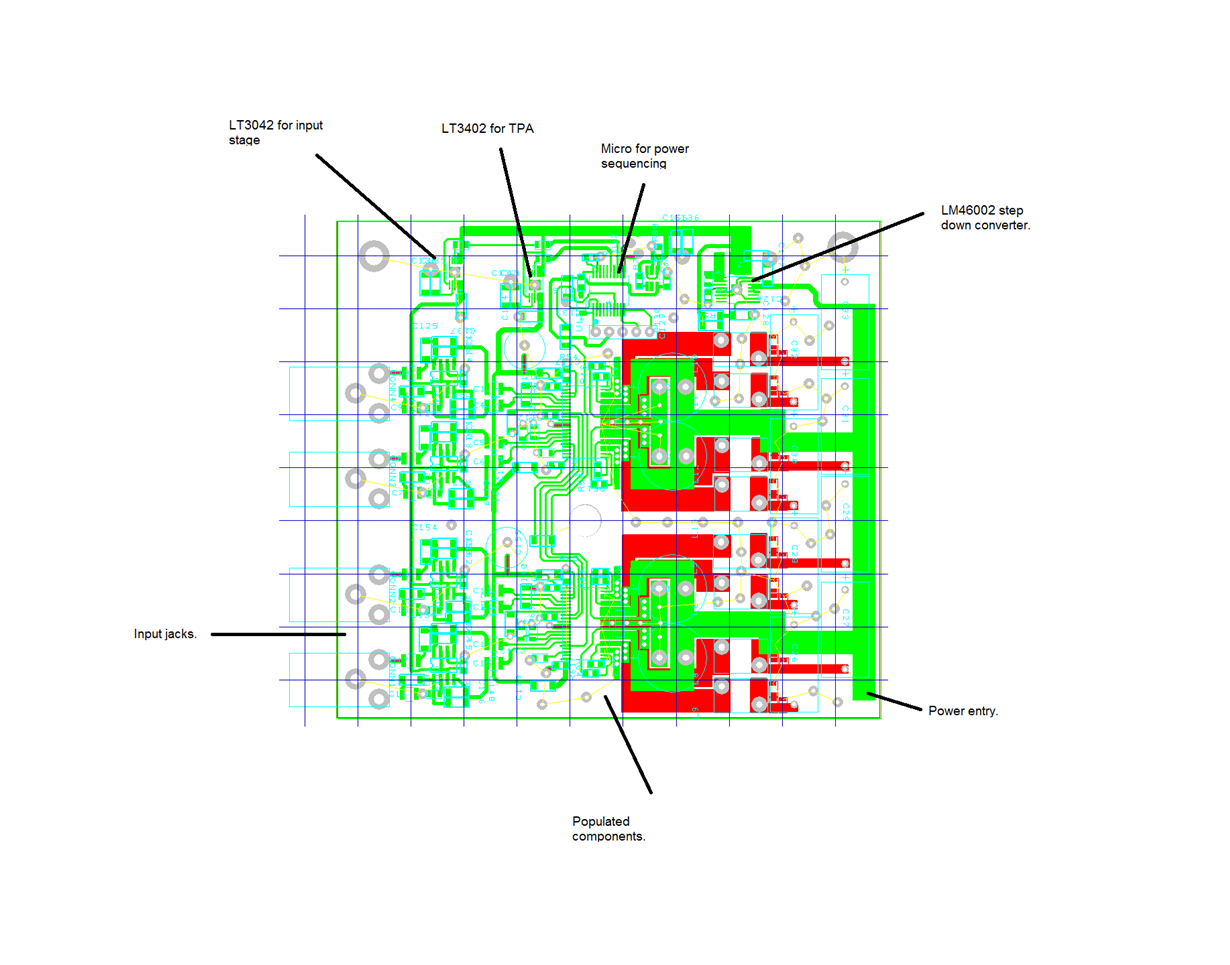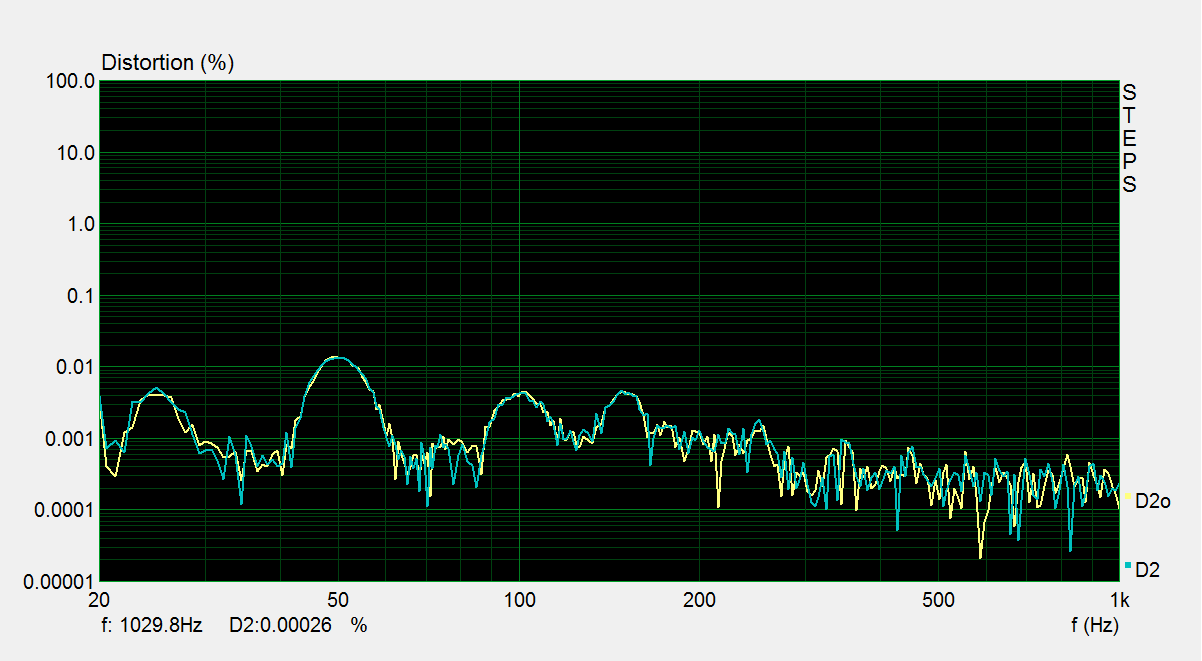Greeting chaps, I managed to snag a sample from a kind individual over on one of the DIY forums and have got a stereo board up and running.
Upon measuring the device however I am seeing rising 2nd order distortion towards low frequencies. This gets significantly worse the higher the output power.
Prior to the device I am using an LME49724 to perform single ended to balanced conversion. I have measured this in isolation and know that this is not the source of the issue.
12V supplies are provided by two LT4032s. One powers the opamps, one the 12V section of the amplifier. An LM46002 provides pre regulation from the power stage power rail. Currently I am powering this from a number of lithium ion cells @ around 25V. I have tried other PSUs but the problem remains, so I doubt it's that.
The performance is otherwise as expected, all the other harmonics are very low, only the 2nd order jumps up and rises towards low frequencies.
Here is an example at 2.8VRMS into a 9.4 ohm load.
Increasing the output power causes the issue to get worse in magnitude and start at higher frequencies. All other harmonics remain unaffected and both channels perform identically. - The 2nd order rise is significantly worse if only one channel is measured too, ie having the amplifier set to BTL mode, but only measuring a single half. And this is a matter of current, rather than voltage, as the issue is not present when no load is connected.
Without you guys needing to wrack your brains too hard over this, is there a known mechanic that might be the cause of this? I have built my design to the recommended circuit diagram in the data sheet, and description therein, but I am wondering if certain components could be the cause? The output inductors are from Ice Components, the main LC caps are polypropylene and the other snubber caps are COG.
Usually when only a single harmonic is present it points towards something specific being the issue.
Many thanks,
Matt.







